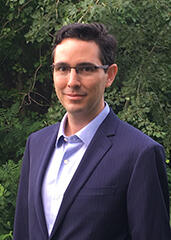 David Atherton, Assistant Professor of East Asian Languages and Civilizations, taught Creativity, a general education course which explores the nature of creativity and the role it plays in our lives, remotely in spring 2021. The course was originally designed before the COVID-19 pandemic and was proposed in response to undergraduate students’ desire for more creative expression, spaces for reflection, and connections to their personal lives in the classroom. “Once the pandemic hit, the goals felt more critical than ever.” Atherton and a team of teaching fellows collaborated with the Bok Center to design the course, grounding it around four core questions. Every week, students were given a creative assignment coupled with an analytic reflection about how their creation connected to the course readings. The course’s capstone project invited students to apply the course themes and create something that would impact someone in their lives, beyond the context of the course. Students included a final reflective essay that explained their project goals.
David Atherton, Assistant Professor of East Asian Languages and Civilizations, taught Creativity, a general education course which explores the nature of creativity and the role it plays in our lives, remotely in spring 2021. The course was originally designed before the COVID-19 pandemic and was proposed in response to undergraduate students’ desire for more creative expression, spaces for reflection, and connections to their personal lives in the classroom. “Once the pandemic hit, the goals felt more critical than ever.” Atherton and a team of teaching fellows collaborated with the Bok Center to design the course, grounding it around four core questions. Every week, students were given a creative assignment coupled with an analytic reflection about how their creation connected to the course readings. The course’s capstone project invited students to apply the course themes and create something that would impact someone in their lives, beyond the context of the course. Students included a final reflective essay that explained their project goals.
Exploring creativity in the (virtual) classroom
The benefits
“The range of what students were turning in each week was astounding,” Atherton reflects, noting the wide variety of remarkable projects the undergraduates created. One student, for instance, interviewed 100 of her Harvard peers about their own creative processes, installed art on the steps of Widener, and made a website featuring participants’ reflections on creativity coupled with course readings. Moreover, the creative reflections also opened space for students to be more vulnerable with each other and with the teaching team about their personal experiences in the pandemic, even when in a large zoom room.
“A corner I turned is just embracing the power of collaboration in this course.”
The challenges
One challenge Atherton foresees when the course shifts back to in-person learning is how to accommodate this style of learning in a physical space large enough. Collaboration and connection were so vital to the course experience that any classroom space would have to reflect that virtual flexibility, including having sufficient space to move things around and let students speak in small groups. “I received many expressions of gratitude from students for not capping the course, particularly given the relative exclusivity of creative or workshop courses on campus.”
Takeaways and best practices
-
Give students something tangible to relate to and reflect on.
Atherton recalls worrying about remote teaching. “In the age of Zoom,” he reflects, “how do students have something tangible and physical they’re relating to and that is giving them the space for personal reflection and exploration?” To achieve this, Atherton gave students a “creativity notebook” as a physical place for them to reflect and incorporated these notebooks in a wide variety of ways—from pausing in lecture to do a one-minute reflective essay to drawing an image related to themes. This granted students space to reflect on their own terms off screen. -
Embrace guest speakers.
Almost every week, the class had visitors ranging from Harvard Art Museum curators to artists to musicians and even a chemist, all reflecting on different guiding questions for the course that week. For instance, to introduce the creativity notebook, Atherton invited curators from the Harvard Museums who discussed how other artists maintained their own sketchbooks. Students afterwards were excited about all the ways they could engage with their physical notebooks as a powerful space to develop their own thoughts during the class. -
Let students share their creations with each other.
Considering the class’s large size, students were assigned into regular breakout groups to discuss readings and complete activities, and then they were given the opportunity to share their group’s results with other classmates through Slack. Atherton reflects how powerful it was to see each other’s photos and drawings across the semester.
Bottom line
Atherton underscores the importance of collaboration and community in building a creative space. In addition to working together with teaching fellows who helped design and teach the course, he emphasized that this collectivism was a major theme of the course content.
